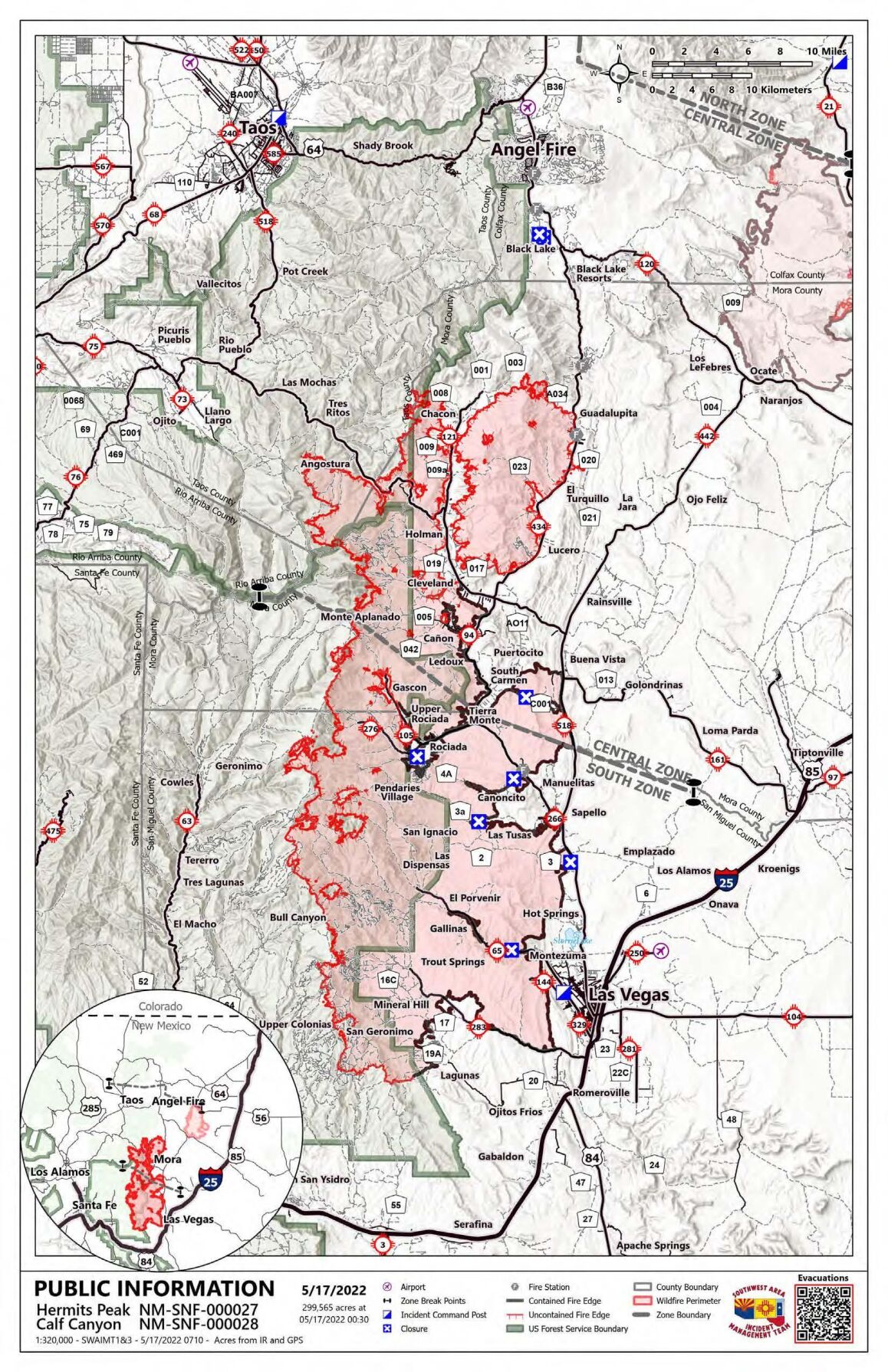The Hermits Peak and Calf Canyon fires in New Mexico reached a milestone May 17. The fire reportedly became the largest blaze in the state’s history, burning 299,565 acres, according to inciweb.nwcg.gov/.
As of 8 a.m., May 17, the fire has reached 26% containment with 2,094 personnel working the fire. The Hermits Peak fire started April 6, while the Calf Canyon began April 19. Spot fires from a prescribed burn started the Hermits Peak while the Calf Canyon fire is under investigation. Most of the fuel load consists of heavy mixed conifer, ponderosa pine, brush, and grass.
According to the website, warm and dry weather will reduce any moisture that was received over the fire on May 16.
“Fire activity may increase with critically dry fuels and rising temperatures and wind speeds. All zones of the fire will continue to utilize air support when conditions allow,” according to the report. “Structure protection and line construction remain the focus of firefighting efforts. In the event of a new start, firefighters will support suppression efforts alongside local area fire personnel. Residents of San Miguel, Mora, Taos, and Colfax Counties should remain on high alert for changes to evacuation statuses and road closures.”
The New Mexico Cattle Grower’s Association is working to put together resources for those affected by the fire burning in the state. Officials have been posting important updates on Facebook and their website, www.nmagriculture.org.
According to NMCGA, the have a Producer Relief Fund, which exists to assist producers with the purchase and delivery of feed and infrastructure needs required to care for displaced livestock. Donations to the fund can be made via https://store7323095.ecwid.com/#!/Producer-Relief-Fund/p/462590219/category=129332251.
More donations are being collected by the New Mexico Livestock Board. If you would like to contribute hay, feed or provide financial assistance, please contact April Riggs, NMLB Area 2 supervisor/regional operations manager for northeast New Mexico at 575-643-6162 or by email at [email protected]; Matthew Romero, District 18 supervisor, at 575-643-6805; and Jose Miera, District 18 inspector, at 505-203-9267.
NMCGA also encourages producers to get in touch with their local Farm Service Agency office. FSA offers assistance to agriculturalists impacted by wildfire—including multiple programs to help during recovery and to mitigate risk on your operation. Visit www.fsa.usda.gov/contact-us to locate the nearest office location.
Programs available through FSA include:
• Emergency Relief Program;
• Emergency Assistance for Livestock, Honeybees, and Farm-Raised Fish Program;
• Emergency haying and grazing of Conversation Reserve Program acres;
• Livestock Forage Disaster Program; and
• Livestock Indemnity Program.
Details and further programs can be found at www.farmers.gov/protection-recovery/wildfire.
Kylene Scott can be reached at 620-227-1804 or [email protected].




